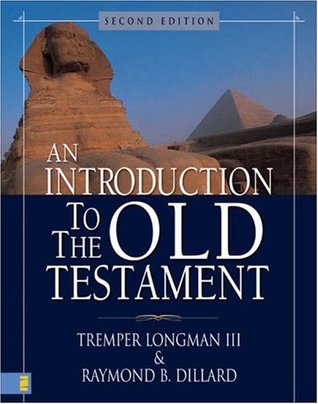More on this book
Kindle Notes & Highlights
The church fathers did not write what we would recognize today as introductions to the Old Testament, but they did deal with topics that would later occupy volumes that go by that name.
The four most significant works are by Young, Archer, Harrison, and LaSor-Hubbard-Bush.
evangelical doctrine of Scripture, however, does not answer all hermeneutical and interpretive questions, nor does it prevent us from learning from the tradition of historical criticism.
R. H. Gundry in his warning that evangelical scholarship sometimes simply uncritically follows in the steps of nonevangelical scholarship in order to find acceptance.
means treating the text as the church has received it.
scholars who take a synchronic approach to the text merely bracket diachronic issues for the moment.
General introduction treats topics that cover the whole tes-tament: issues such as text and canon. Special introduction handles individual books.
differs from a number of introductions that follow the order of the Hebrew Bible in the Masoretic tradition
Three general topics constitute the discussion in each chap-ter: historical background, literary analysis, and theological message.
The history has theological meaning; the theology is based on historical events. The texts that narrate this theological history or historicized theology are fittingly described as literary art.
The Bible is a timeless book only in the sense that it has an impact on every generation. The books of the Bible are also culture-bound. They were written for people in antiquity in a language and culture and with literary conventions that they understood.
important to differentiate history and historiography. The first refers to the events that have taken place in the past, and the second, to writing about the events.
author(s) of the Pentateuch believed that God actually created the universe in the past, Abraham migrated from Mesopotamia to Palestine, Moses parted the Red Sea, David ascended the throne of Israel, the kingdom was divided under Solomon’s son, the Babylonians defeated the Israelites, and Ezra and Nehemiah led a reform in the postexilic community.
stated and not proved.
The concern of the text is not to prove the history, but rather to impress the reader with the theological significance of these acts. History and theology ...
This highlight has been truncated due to consecutive passage length restrictions.
commentators have referred to biblical history as “ theological history,” “ prophetic history,” and “ covenantal history.”
Poetry is highly stylized language that is usually easy to distinguish from prose stories.
While prose is composed of sentences and paragraphs, poets use short clauses, grouped together by varying levels of repetition, and stanzas. As a result, poetic lines are very short.
(1) the suppression of conjunctions and other particles,
(2) a high frequency of imagery (discussed later).
Parallelism is almost always present in poetry, but it is also a linguistic ornament that is occasionally found in prose contexts.
Imagery contributes to the
compactness of poetry because it allows the authors to communicate their message using fewer words.
Terseness, parallelism, and imagery are the most common characteristics of Hebrew poetry.
Psalm 98 is a case in point. It is in the genre of “ Hebrew poetry” by virtue of its parallelism, terseness, and imagery. On another level, it is in the narrower category of “hymn” because of its mood of unrestrained joy. On an even narrower level, it is a “ divine warrior hymn” because it specifically extols God’s power as savior in a military situation.
genre as a trigger to reading strategy, and genre as a second literary context.
Narratives may be divided into first- and third-person types.
narrative in the Bible is third-person omniscient narrative
Rhoads and Michie note, “ When the
narrator is omniscient and invisible, readers tend to be unaware of the narrator’s biases, values, and conceptual view of the world”
The prose narratives of the Old Testament are multifunctional.
Most intend to impart historically accurate information while leading the reader to a deeper theological understanding of the nature of God and his relationship with his people.
In the study of the Old Testament there are three main areas where this bridging must take place: history, literature, and theology.
Theology here refers to discourse about God, his nature, and, even more important, his relationship with his creatures. It asks the question, What does a book tell its readers about God and their relationship with him?
major themes of the biblical books are understood through careful exegesis of individual biblical texts.
Old Testament theologians have questioned whether there is a center.
while there is an organic unity to biblical revelation,
Poythress has labeled such an approach “mult...
This highlight has been truncated due to consecutive passage length restrictions.
The function of the history contained in Genesis is to provide a prologue and foundation of the founding of the nation of Israel and the giving of the law in the book of Exodus. It recounts how God chose Abraham and guided his family as his special people.
Koorevaar (1990) analyzes the book of Joshua in four main sections, each dominated by a particular Hebrew word and concept: (1) going over ( ‘ âbar— 1: 1– 5:12), (2) taking (laqah..5: 13– 12:24); (3) dividing (h. âlaq — 13: 1– 21:45); (4) worshiping ( ‘ âbad — 22: 1– 33).


